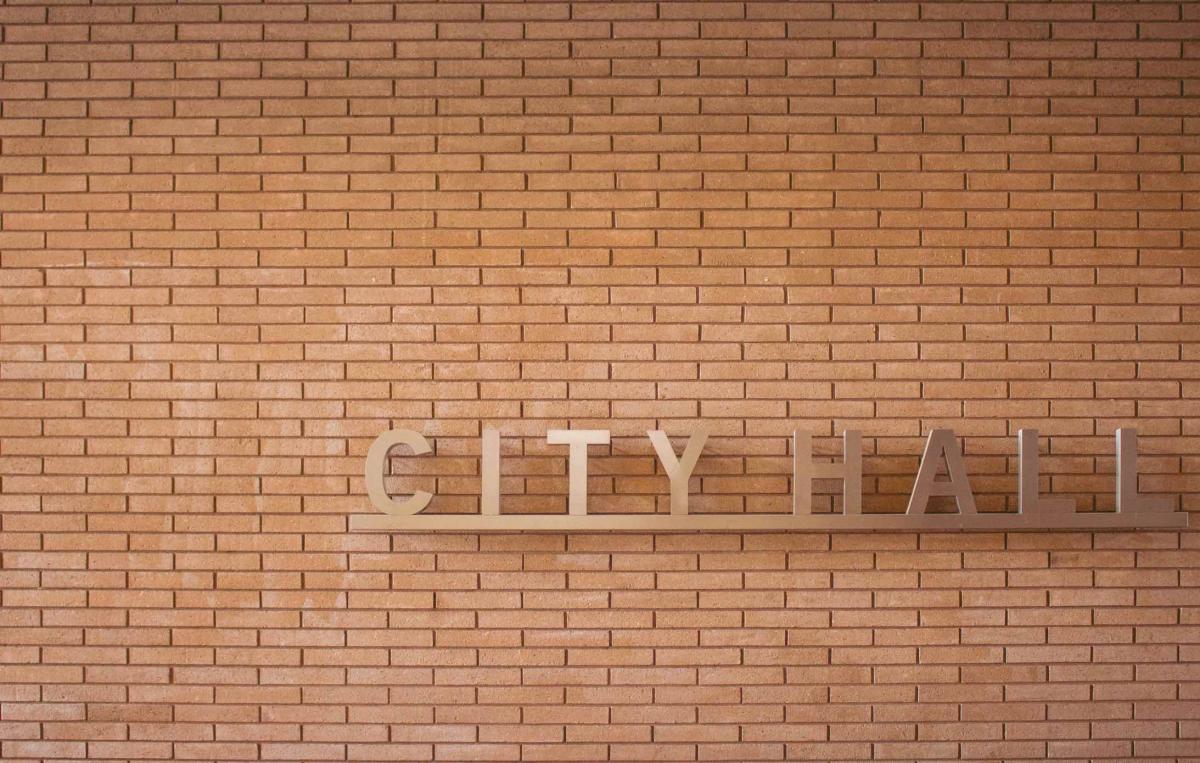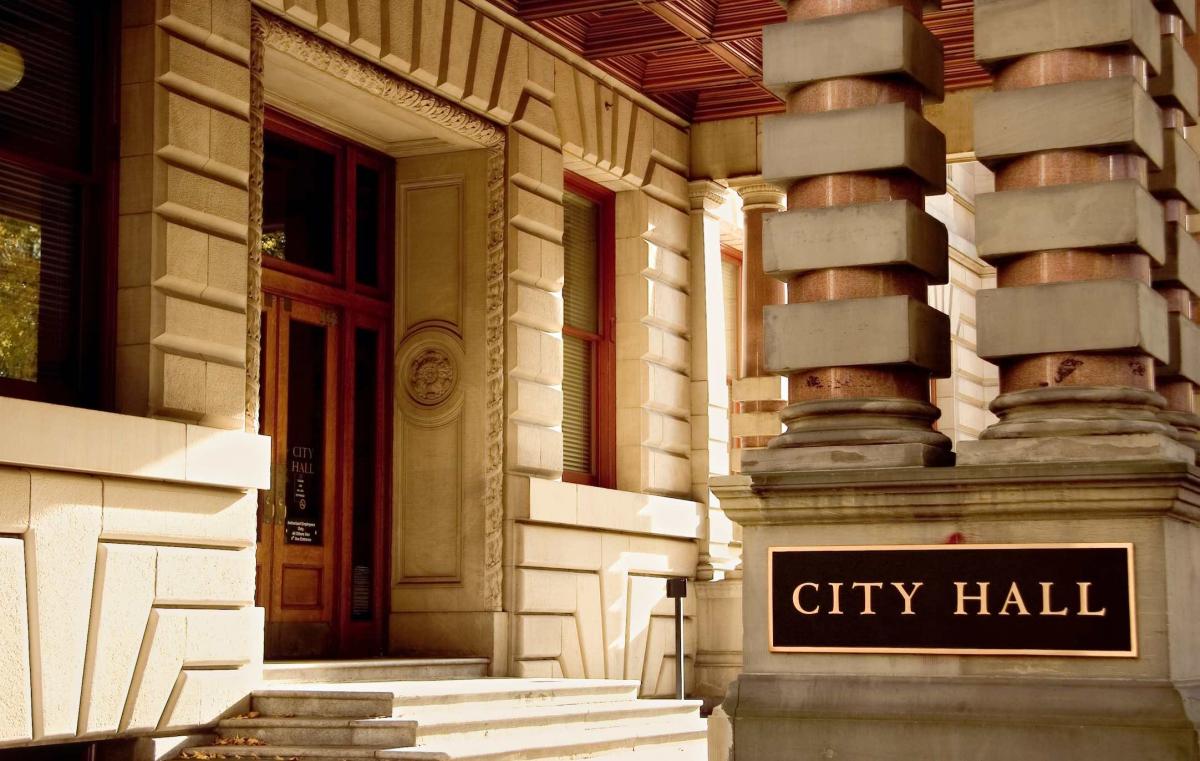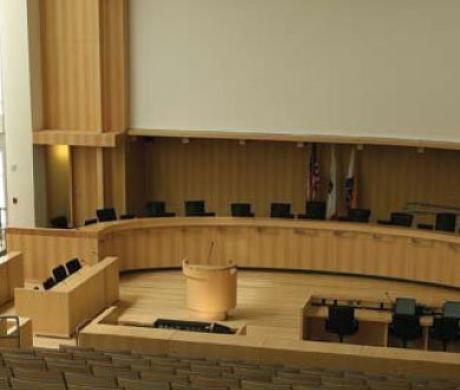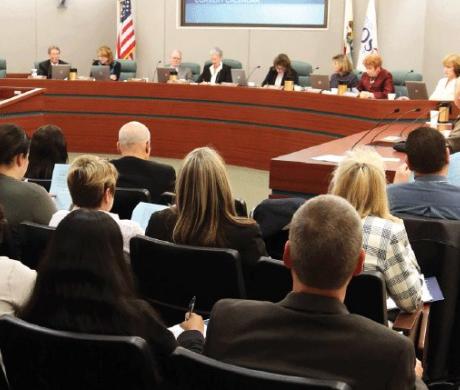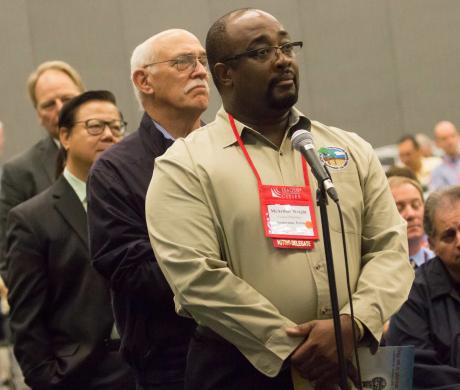After the Campaign Is Over: Aim for Exceptional
The 2018 midterm election cycle was one of the most divisive, polarizing and competitive election cycles in recent U.S. history. And Election Day came on the heels of an extraordinarily contentious battle over filling a Supreme Court seat — a clash that left some wondering if democracy had reached a new low.
The November ballot in California included 11 statewide ballot initiatives, with proponents and opponents of those measures contributing over $368 million to win. In addition to voting on ballot measures, California voters elected Assembly and Senate members, a new governor, lieutenant governor, treasurer, controller and superintendent of public instruction, among others. Golden State voters also re-elected Sen. Dianne Feinstein (D-Calif.) for a sixth term and sent 53 returning and newly elected members to the U.S. House of Representatives, where Democrats captured the majority.
Election Day also saw significant action at the local level, where hundreds of Californians ran for local government offices, including city council, mayor, sheriff and more. Besides electing local leaders, California voters weighed in on 386 local tax and bond measures and approved over 300 to support local public services and facilities for police, fire, housing, parks, transportation and schools.
Campaigns and Sharp Contrasts
Campaigns and elections, at their core, often accentuate what divides us. They are designed to set a given candidate or issue apart from another. In a campaign, candidates strive to present their positions on policy issues or problems as sharply contrasting with those of their opponents. It’s all part of the effort to persuade voters and win their votes.
At the municipal level, this can take on a highly personal tone, as local officials regularly find themselves campaigning against an opponent who is also their neighbor or fellow council member. He or she may shop at the same grocery store as you, may attend the same place of worship and visit the same commercial establishments and local farmers markets. Your children may even attend the same school. In other words, your opponent is often no stranger.
Moving From Campaigning to Collaborating
However, after the campaign is over, the final ballots have been counted (which may take several weeks) and the oaths of office taken, your constituents — those who voted for you and those who may not have — expect their officials to faithfully and impartially perform and discharge the duties of their office according to the law and the best of their ability, as the oath of office requires. These duties include collaborating with council colleagues (and sometimes former opponents) and others in City Hall to:
- Protect the public’s safety;
- Improve the quality of life by effectively delivering essential community services;
- Grow the local economy;
- Create jobs;
- Be a responsible steward of public resources; and more.
Campaigns may highlight our differences; however, after every election, thousands of elected city officials make the transition beyond divisive campaign rhetoric to effective governance and carry out the duties that voters expect them to fulfill. This transition is a hallmark of a functioning democracy. And presumably that is why, according to a 2018 Pew Research report, two-thirds (67 percent) of Americans surveyed had a favorable opinion of their local government, compared with only one-third (35 percent) who viewed the federal government favorably.
When writing this column, I thought about my time serving as director of the Department of Metropolitan Development for Indianapolis and later as deputy mayor under former Mayor Bart Peterson. In a partisan election system, Peterson was the first Democratic mayor elected since 1967 and would share governing with a 29-member city-county council led by a Republican majority.
Peterson wasted no time transitioning from candidate to mayor of the nation’s then-12th largest city. He turned his attention to carrying out his campaign promises, which included improving the delivery of services to all neighborhoods. This soon became the focus of my role in the administration. Like Peterson, I quickly realized there were no Republican or Democratic potholes, just dangerous potholes that constituents expected the city to repair.
Immediately after the election, the mayor began visiting diverse neighborhoods throughout the city to meet with residents, some of whom had voted for him and others who had not, to understand their priorities and what they needed from their local government. While not every neighborhood leader agreed with his priorities, they were included in the decisionmaking process regardless of how they had voted. Peterson was also inclusive in his outreach and collaboration with all city-county council members — four who were elected at large and 25 who were elected in districts; some were Republicans and others were Democrats.
Although local government races in California are nonpartisan, it can still be challenging to put aside the competitive mindset after the election is over and work together as a cohesive team to do what’s best for the community.
The Qualities of Exceptional Councils
As we move beyond the 2018 midterm election cycle, I believe the public will continue to look favorably on local government and a functioning local democracy if newly elected and re-elected mayors and council members embrace the following attributes of exceptional councils.
Exceptional councils develop a sense of team — a partnership with the city manager to govern and manage the city. The mayor, council members and city manager see themselves as a team in a joint endeavor as they undertake a series of tasks to achieve their common purpose. The individual team members work in a coordinated and collaborative manner with a high degree of respect, trust and openness. The team values diversity in styles and perspectives, and it thinks and acts strategically as it examines issues and situations and decides on a course of action serving the city’s mission and goals.
Exceptional councils have clear roles and responsibilities that are understood and adhered to. Exceptional councils understand their role is to serve as policymakers — to represent the community’s values, beliefs and priorities while serving in its best interest. They carry out a variety of responsibilities, including:
- Developing and adopting a vision for the city;
- Focusing and aligning plans, policies, agreements and budgets to advance this vision; and
- Holding themselves and the city manager accountable for results.
Exceptional councils understand that the city manager is responsible for the city’s day-to-day operations and for undertaking and accomplishing the council’s policy objectives. The exceptional council recognizes the subject matter expertise of staff and uses that knowledge and experience to guide and inform decisionmaking.
Exceptional councils honor the relationship with staff and each other. Such councils understand that a good working relationship with staff is vital for the city to be run successfully. Exceptional councils treat each other and staff with dignity and respect. They act with civility and a high level of professional decorum. Council members build trust by not playing the “gotcha game” and strive to take a “no secrets, no surprises” approach as the operating norm. Finally, they respect the diversity of styles and perspectives among their colleagues and staff and are open to new ideas.
Exceptional councils routinely conduct effective meetings. Open and public meetings are central to democratic decisionmaking. Exceptional councils master the art of effective meetings. They:
- Develop and adhere to meeting protocols and processes;
- Spend time planning and organizing the agenda with the aim of having a focused meeting;
- Allocate the council’s time and energy appropriately, focused on its role and responsibilities and on meeting short- and long-term priorities; and
- Honor the public’s participation and engagement.
Such meetings generally start on time and are held during reasonable hours.
Exceptional councils use public meetings not only for their intended purpose, information sharing and decisionmaking, but also as an opportunity to demonstrate respect and civility for each other, staff and the public. The council members review the necessary materials and prepare ahead of the meeting. They stay focused on the city’s goals and objectives and remain mindful of their role and responsibilities.
Exceptional councils hold themselves and the city accountable. They operate openly and ethically and work to engage residents in myriad decisions affecting the community’s prosperity and well-being. Toward that end, exceptional councils consistently provide short- and long-term strategic direction and goals as well as budget, program and policy oversight.
Exceptional councils hold themselves accountable for their conduct, behavior and effectiveness. They establish clear priorities and goals and hold the city manager accountable for results. And finally, they embrace accountability as a process and tool to calibrate ongoing efforts to address and meet policy and program objectives.
Exceptional councils have members who practice continual personal learning and professional development. Governance is not intuitive. In addition, the policy and economic environments impacting cities are ever changing. Exceptional councils continually find ways to build their knowledge and skills, enhance their understanding of key issues, increase their awareness of best practices and sharpen their leadership and governance skills.
This material is drawn from resources provided by the Institute for Local Government. For more information on effective governance, visit www.ca-ilg.org/effective-governance.
Focusing on What Unites Us
Leading in a post-election environment can be challenging, but our democracy depends on it. As the League’s executive director, I am inspired every day by the efforts of city managers, council members, mayors and city staff to bridge what divides us and to focus instead on the ties that unite us as individuals and communities.
Related Resources
Pew Research Report referenced in this article:

